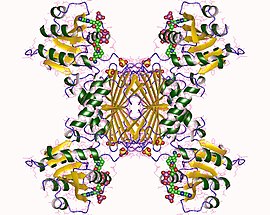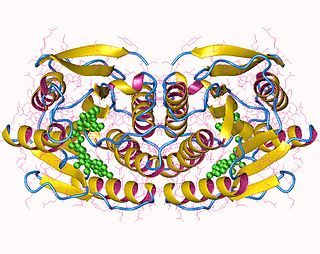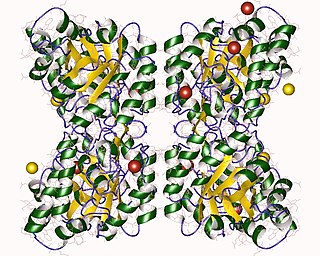| 4-hydroxy-tetrahydrodipicolinate reductase | |||||||||
|---|---|---|---|---|---|---|---|---|---|
 Dihydrodipicolinate reductase tetramer, Corynebacterium glutamicum | |||||||||
| Identifiers | |||||||||
| EC no. | 1.17.1.8 | ||||||||
| CAS no. | 9055-46-3 | ||||||||
| Databases | |||||||||
| IntEnz | IntEnz view | ||||||||
| BRENDA | BRENDA entry | ||||||||
| ExPASy | NiceZyme view | ||||||||
| KEGG | KEGG entry | ||||||||
| MetaCyc | metabolic pathway | ||||||||
| PRIAM | profile | ||||||||
| PDB structures | RCSB PDB PDBe PDBsum | ||||||||
| Gene Ontology | AmiGO / QuickGO | ||||||||
| |||||||||
In enzymology, a 4-hydroxy-tetrahydrodipicolinate reductase (EC 1.17.1.8) is an enzyme that catalyzes the chemical reaction
Contents
- (S)-2,3,4,5-tetrahydropyridine-2,6-dicarboxylate + NAD(P)+ + H2O (2S,4S)-4-hydroxy-2,3,4,5-tetrahydrodipicolinate + NAD(P)H + H+
The 3 substrates of this enzyme are (S)-2,3,4,5-tetrahydropyridine-2,6-dicarboxylate, NAD+ or NADP+, and H2O, whereas its 3 products are (2S,4S)-4-hydroxy-2,3,4,5-tetrahydrodipicolinate, NADH or NADPH, and H+.
This enzyme participates in lysine biosynthesis.







